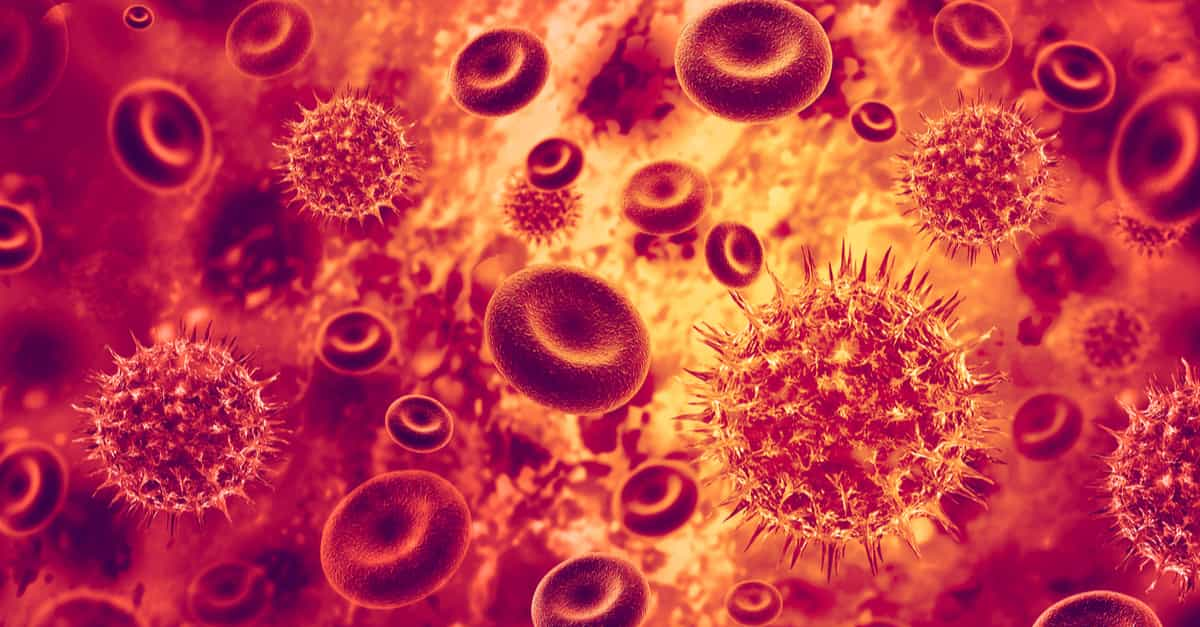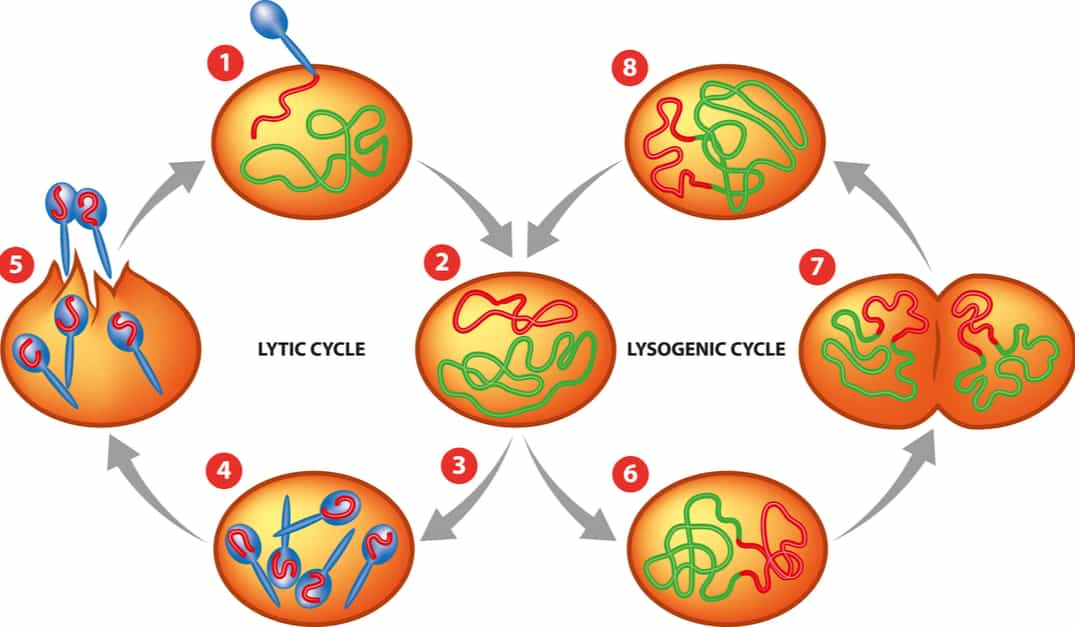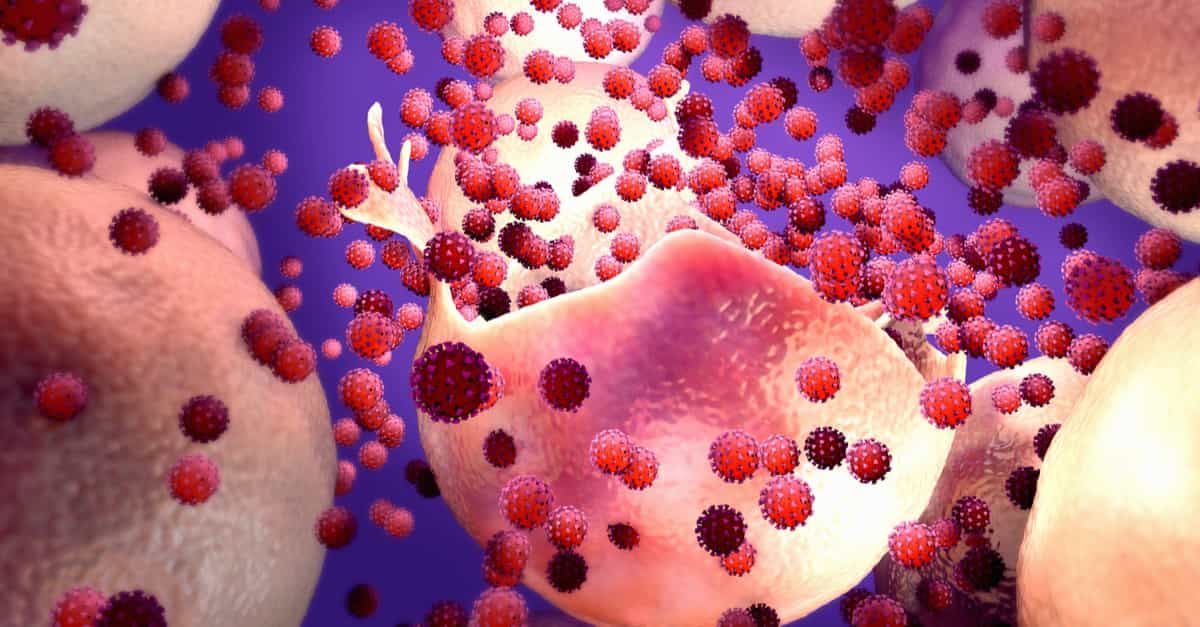Viruses are protein structures with chains of nucleic acids inside either DNA or RNA, among others. There is still much debate in the scientific world about whether they are life forms or not, since they have existed practically since the beginning of the cell, and they have remained on earth thanks to the fact that they can reproduce, but how do viruses reproduce? To understand the answer, we have to delve a little into these curious structures. A virus is capable of reproducing, it is true, but it needs an organism to be able to replicate since it cannot do this by itself. Besides, another very important argument is that viruses lack the fundamental life units of organisms: the cell.
Differences Between Infection and Disease
When a virus enters your body and begins to reproduce, we call it an infection. The disease occurs when cells in the body are damaged as a result of infection, and signs and symptoms of a condition appear.
How do Viruses Act in Our Bodies?

Unlike bacteria and other microorganisms, viruses work by infecting a cell, disrupting its functions, or even killing it. The most common reactions in the human body are fever, the body’s way of trying to inactivate viruses, or the secretion of chemicals that block their reproduction or capture by antibodies.
How do viruses reproduce?

The reproductive cycle of the virus will determine the infection, contagion, symptoms, among other things. There are two main types of reproductive cycles, lytic cycles and lysogenic cycles.
- Lytic cycle: We say that a virus has a lytic cycle when it immediately transcribes the genetic material it carries and does not allow much time to pass once it penetrates the cell. Viruses that have lytic cycles and cause infections do not stay long in the infected cell and are easily cleared from the body.
- Lysogenic cycle: This is a reproductive cycle where viruses can attach their genetic information to that of the host cell. Thanks to this characteristic, their detection is very difficult, and that is why they have a longer time to reproduce within the cell.
In summary, viruses with lytic cycles attack the cell directly. In contrast, viruses with lysogenic cycles camouflage themselves in the cell for a time, taking advantage of its enzymatic machinery before attacking.
Phases of the Viruses Reproductive Cycle

We can now see how viruses reproduce. There are many types of viruses, with very different structures and characteristics. However, in their reproductive cycle, several phases can be recognized, which vary between the different types of viruses that exist. These are fixation, penetration, stripping, multiplication, and release of the new viruses.
- Fixation or absorption: Viruses, when entering the body, have to reach the cell they attack, and the first encounter is always with its cell membrane, where the fixation has to be made. This is done by the virus employing proteins that it contains in its capsid. The specificity of these proteins with their receptors determines the success of the infection.
- Penetration: Now that the virus has attached itself to the cell, the next thing is to get inside it. This is possible because of the fact that viruses can fuse their capsid with the cell membrane through enzymes that manage to create an anchor point between the virus and the cell’s interior. Through the anchor point that is created, the virus injects its genetic material into the cell cytoplasm. A cell that has capsids in its cell membrane is a sign that it has been infected. However, this is not the only way by which a virus enters a cell, it can also penetrate with the whole capsid, and that is why in the penetration phase, we can say that there are two types, direct and indirect. The direct is when the virus opens a gap and penetrates by injecting its genetic material. The indirect is when it fuses with the cell membrane and penetrates with the capsid, which is degraded inside the cell and releases the genetic information.
- Stripping: This phase occurs when the capsid is disintegrated, and the genetic material from the virus is released. It is here that we can distinguish between lytic and lysogenic reproduction. In the lytic cycle, the genetic material proceeds immediately to the transcription of its chain of nucleic acids, causing it to reproduce. This form is the most common among viruses. In the lysogenic cycle, the chain of genetic information from the virus is inserted into the DNA of the cell it infects, causing its genetic information to be reproduced when the cell also replicates. The virus’s DNA chain will detach itself from the infected cell’s DNA when it has reached the required conditions and will continue with the other phases of the infection.
- Multiplication: In this phase, the virus will replicate and multiply. The main purpose of this phase is to create more viral genetic material, replicating its DNA or RNA chain, causing the infected cell to produce the enzymes and proteins for the capsid of the new viruses. Here we can distinguish different forms of multiplication determined by the type of nucleic acid chain they have. DNA: This type of virus replicates similarly to that of the infected cell, using its DNA, so the virus is also multiplied by the host’s cellular processes. RNA: this type of virus does not need the cell’s DNA since the RNA chain works as a template for its complements, using the cell as a safe environment to carry out these processes.
- Liberation: Once the genetic material has multiplied, the new viruses are released, capable of infecting other cells and creating the same process. There are two types of release: budding and lysis. Budding occurs when new viruses leave the cell as soon as they are assembled without waiting for the death of the cells that have been infected. Lysis occurs when new viruses wait for the death of the cell before leaving it. This type of virus is also called cytolytic.
Bottom Line – Viruses may seem harmless, but the reality is that they are very dangerous structures that can damage our bodies. They continue to evolve to avoid our natural defense systems and drugs at all costs. Knowing how viruses reproduce can give us an idea of the general processes of these tiny structures.
